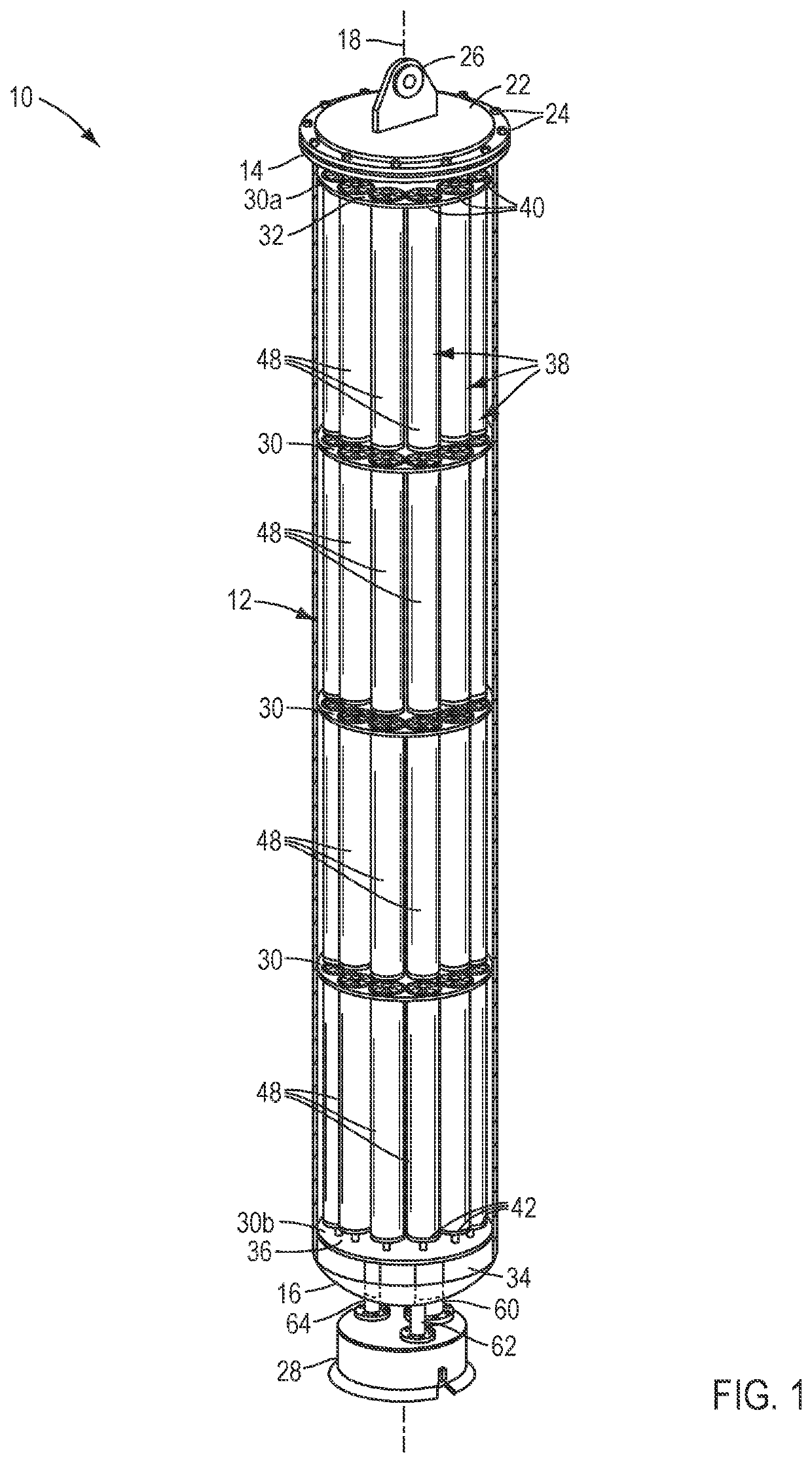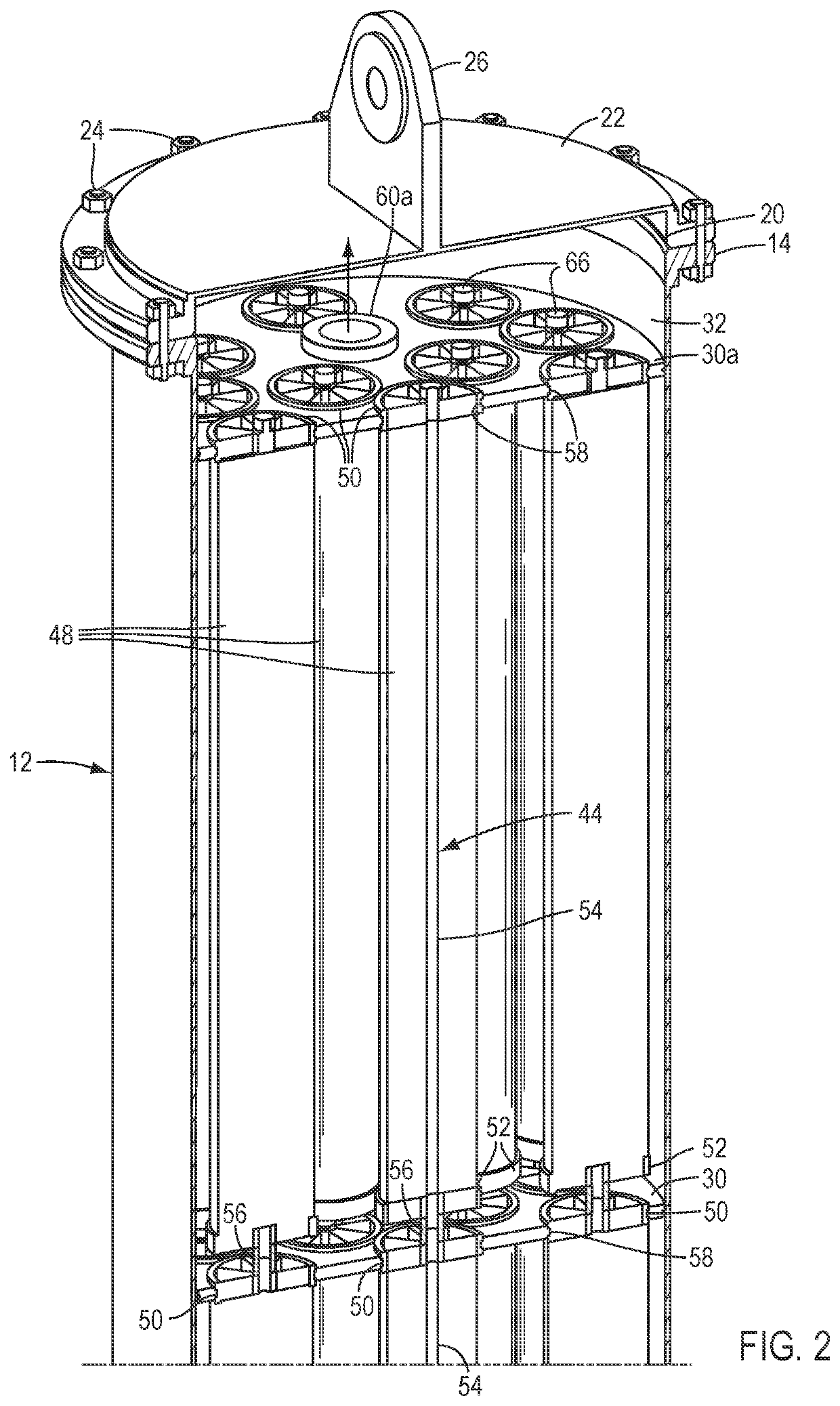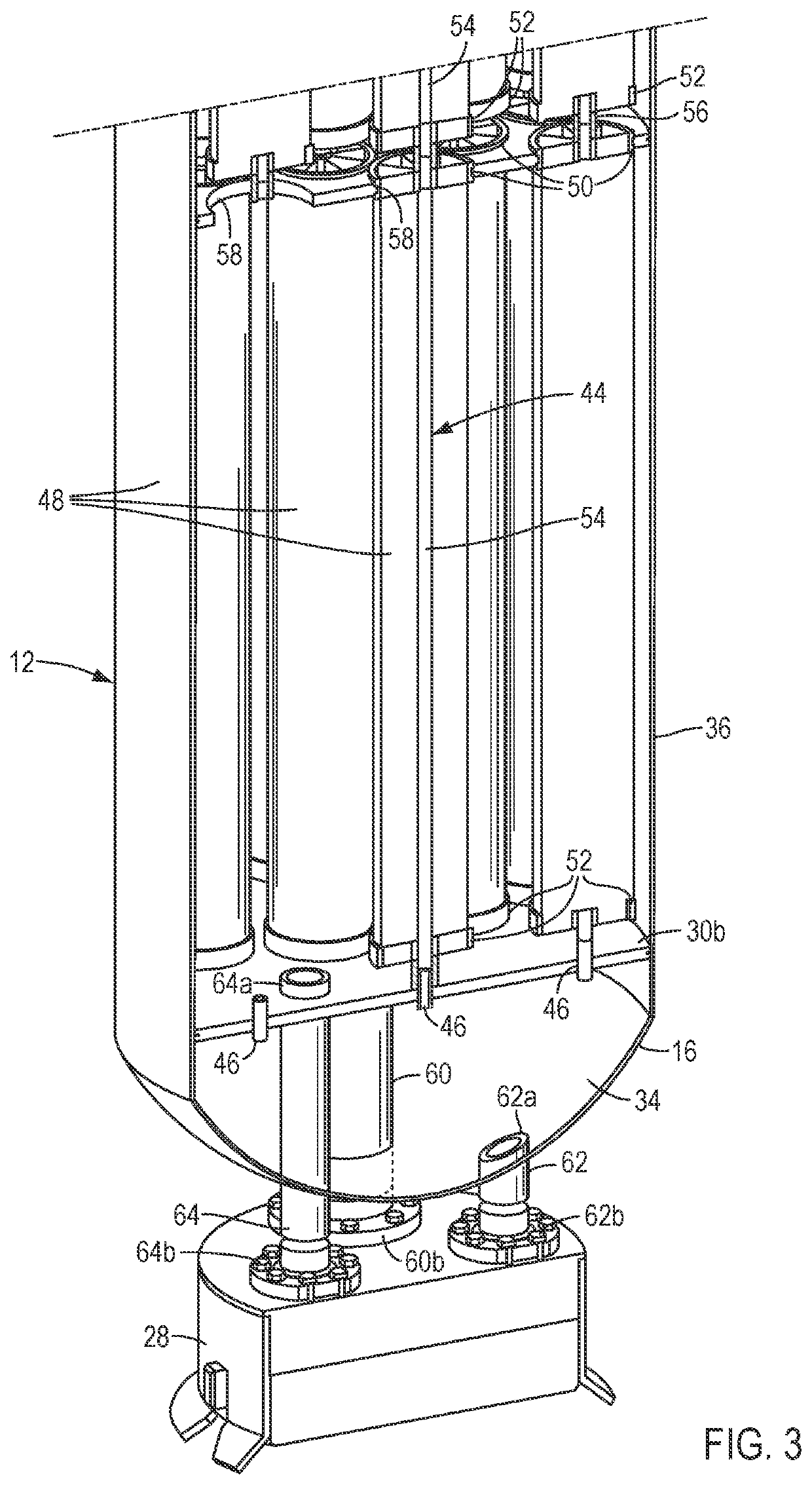Subsea Seawater Filtration Apparatus
a technology of filtration apparatus and seawater, which is applied in the direction of filtration, water/sewage treatment by degassing, membranes, etc., can solve the problems of large footprint, large footprint, and large footprint of filtration system, and achieves large footprint/weight requirements, high operating costs associated with intervention, cleaning and replacement, and complex filtration assembly
- Summary
- Abstract
- Description
- Claims
- Application Information
AI Technical Summary
Benefits of technology
Problems solved by technology
Method used
Image
Examples
Embodiment Construction
[0021]A general embodiment of the filtration apparatus of the present disclosure comprises a tubular casing comprising a longitudinal axis and first and second ends, a plurality of elongated filtration membrane stacks positioned side-by-side in the casing generally parallel to the longitudinal axis, and a plurality of partition plates positioned in the casing and preferably sealed thereto to thereby define an intake collection chamber between a first of the partition plates and the first end, a discharge collection chamber between a second of the partition plates and the second end, and a reject collection chamber opposite the second partition plate from the second end. Each filtration membrane stack comprises an intake end which is fluidly connected to the intake collection chamber, a discharge end which is fluidly connected to the reject collection chamber, and a permeate channel which extends between the first and second ends and is fluidly connected to the discharge collection c...
PUM
| Property | Measurement | Unit |
|---|---|---|
| wt % | aaaaa | aaaaa |
| thickness | aaaaa | aaaaa |
| hydrophilic | aaaaa | aaaaa |
Abstract
Description
Claims
Application Information
 Login to View More
Login to View More - R&D
- Intellectual Property
- Life Sciences
- Materials
- Tech Scout
- Unparalleled Data Quality
- Higher Quality Content
- 60% Fewer Hallucinations
Browse by: Latest US Patents, China's latest patents, Technical Efficacy Thesaurus, Application Domain, Technology Topic, Popular Technical Reports.
© 2025 PatSnap. All rights reserved.Legal|Privacy policy|Modern Slavery Act Transparency Statement|Sitemap|About US| Contact US: help@patsnap.com



